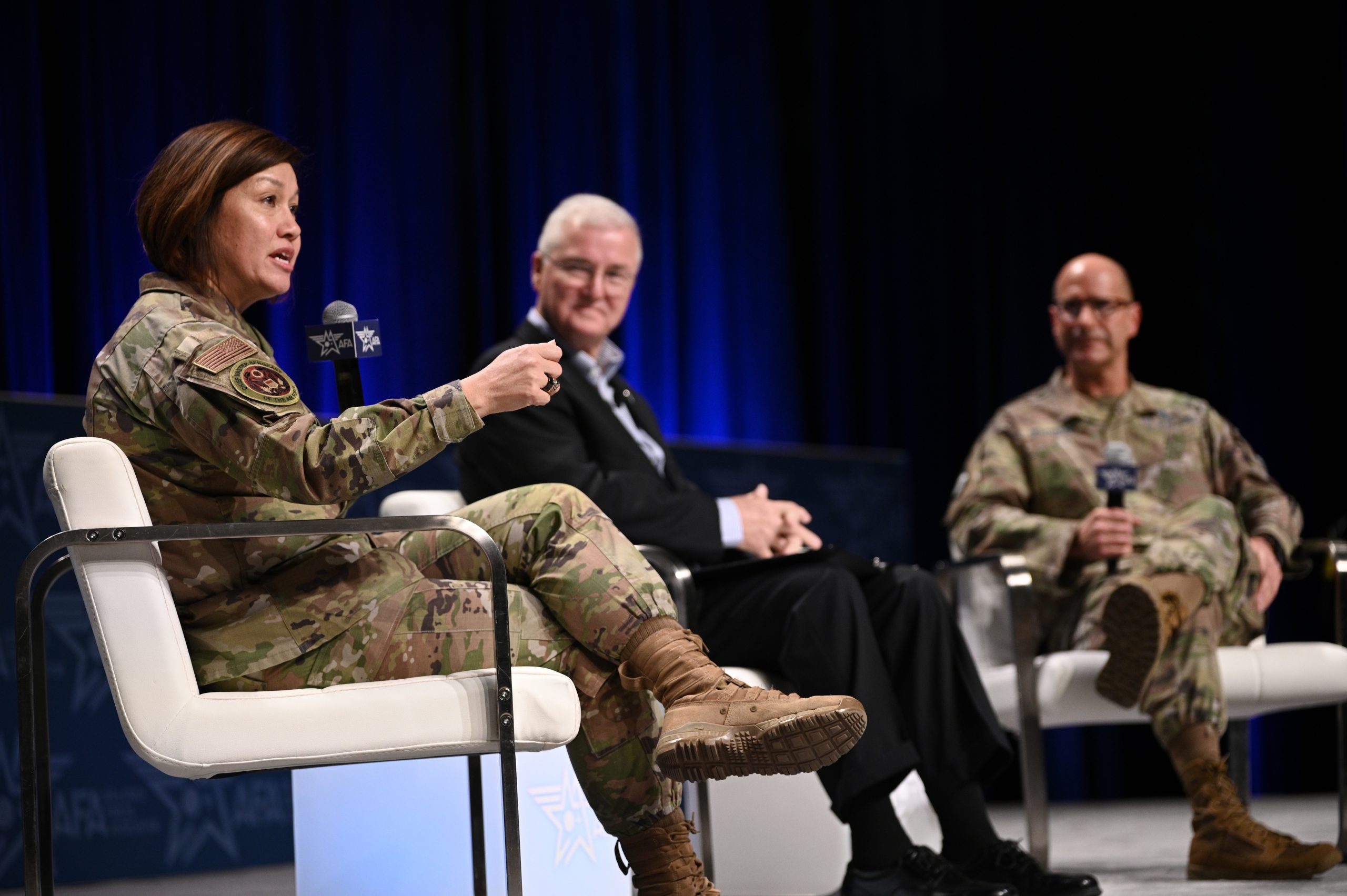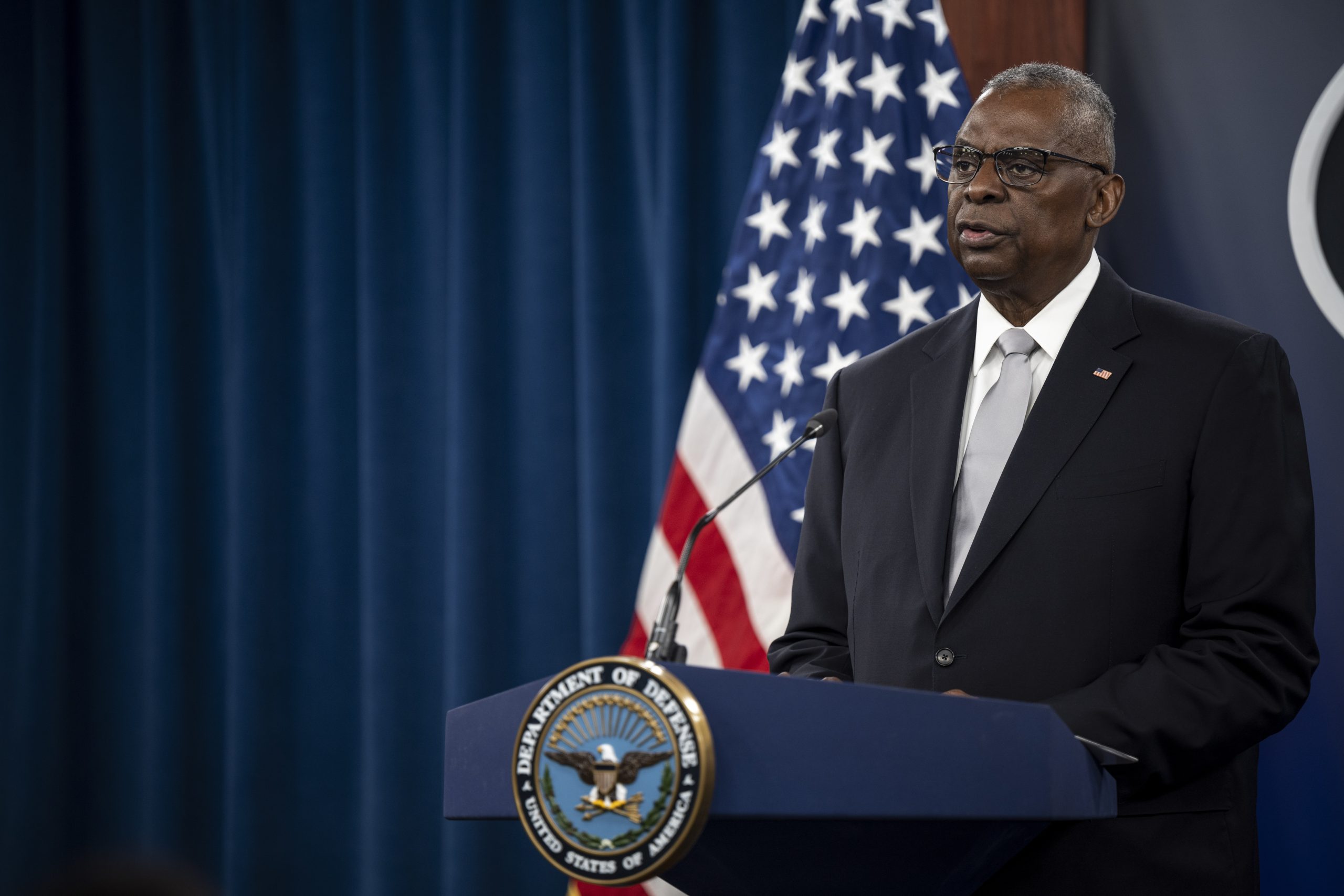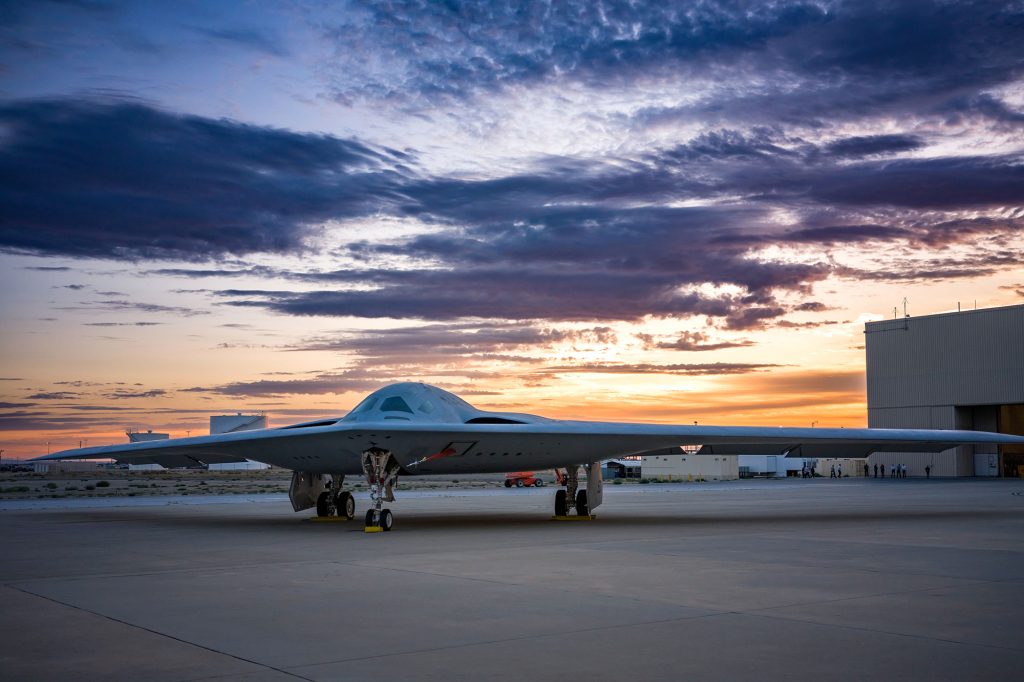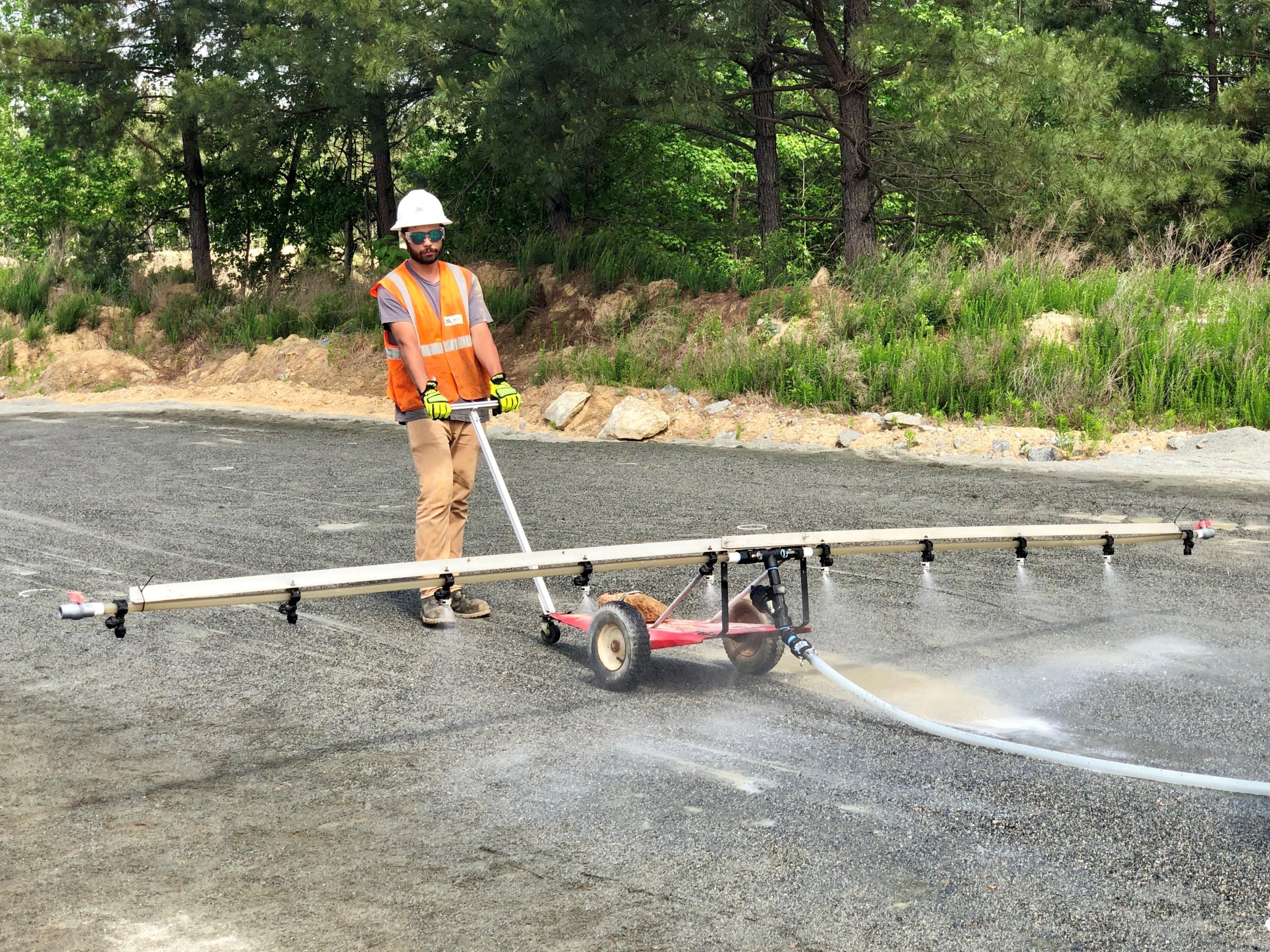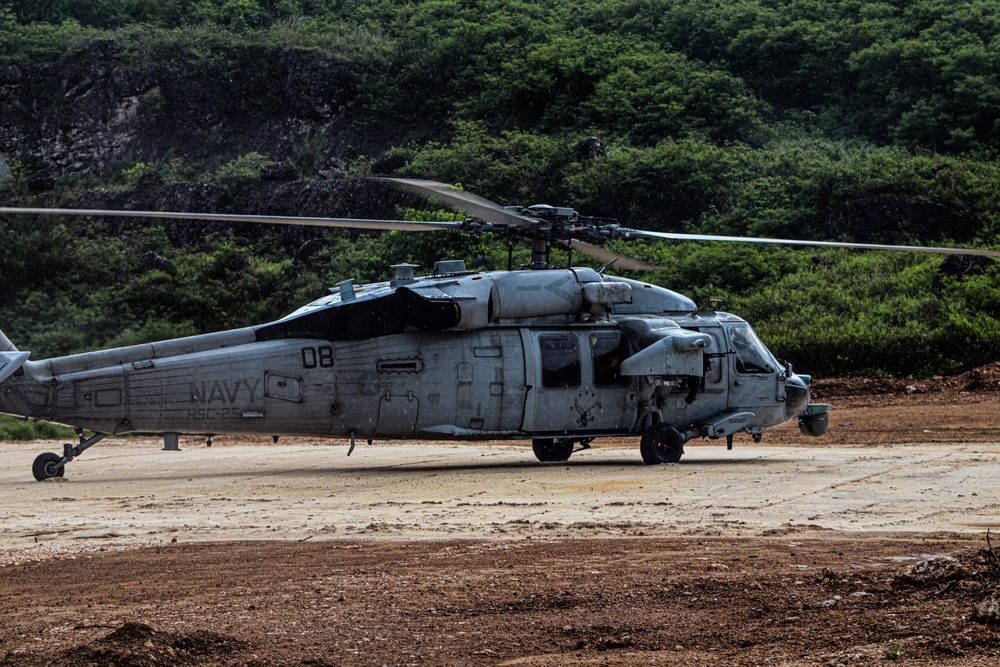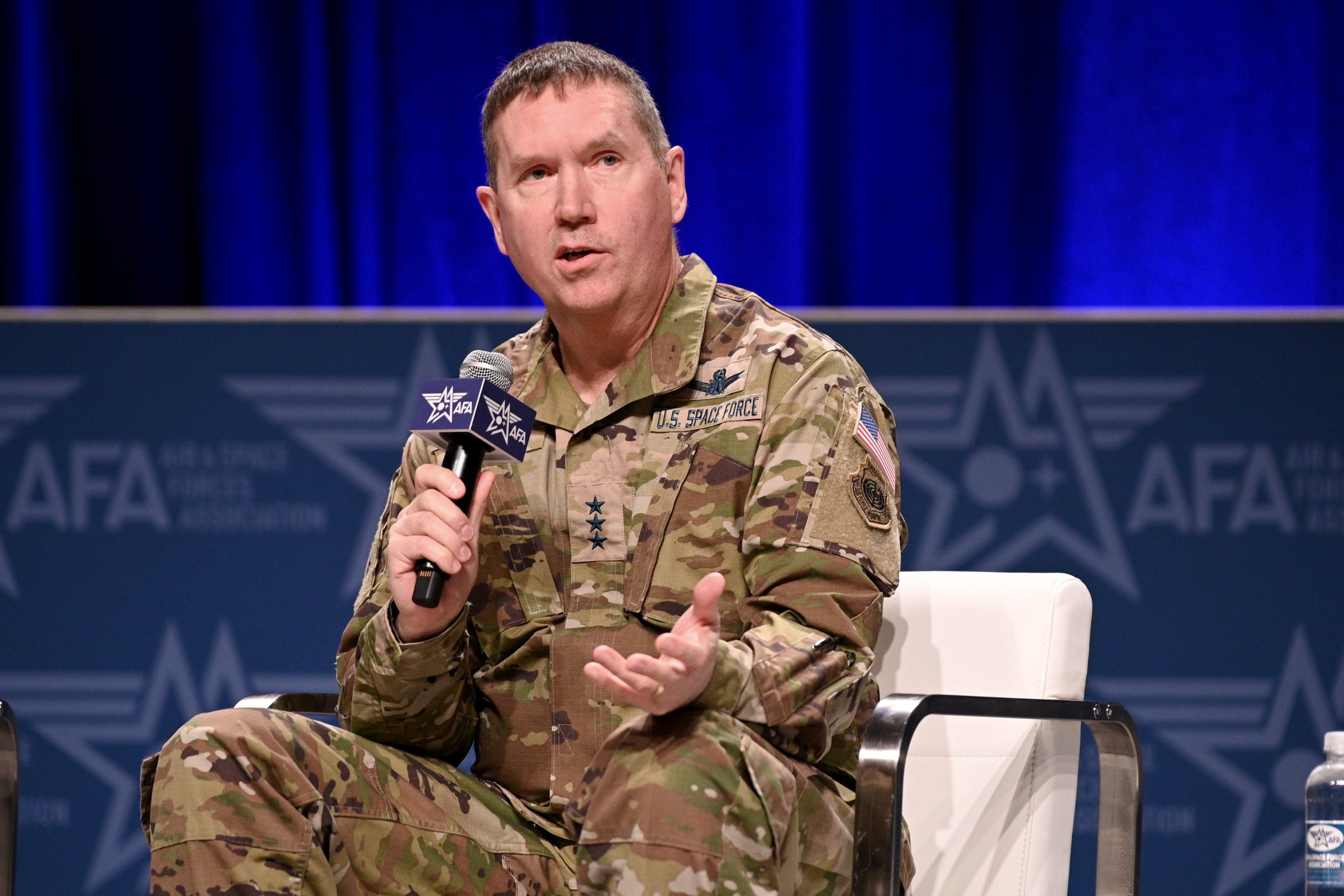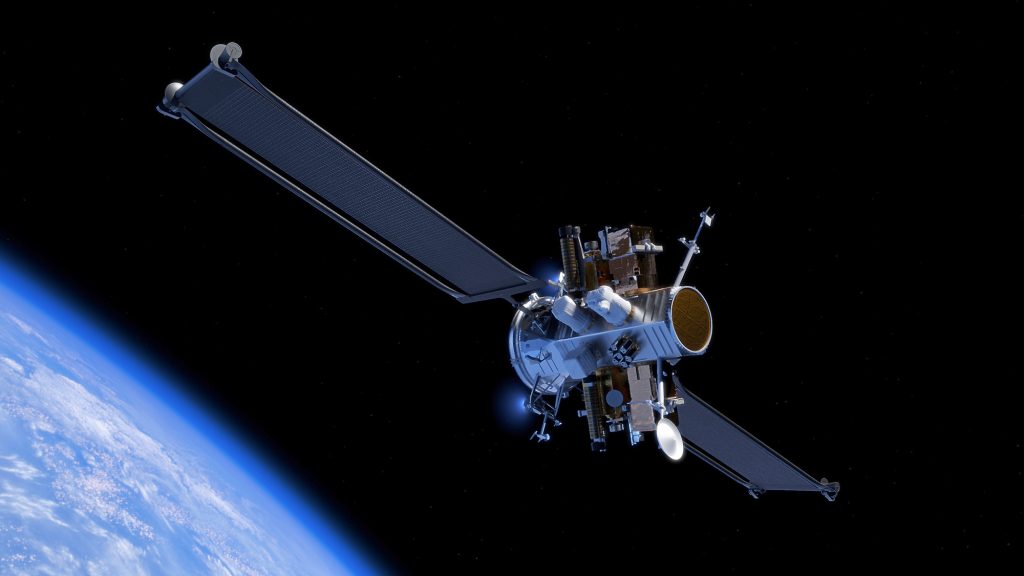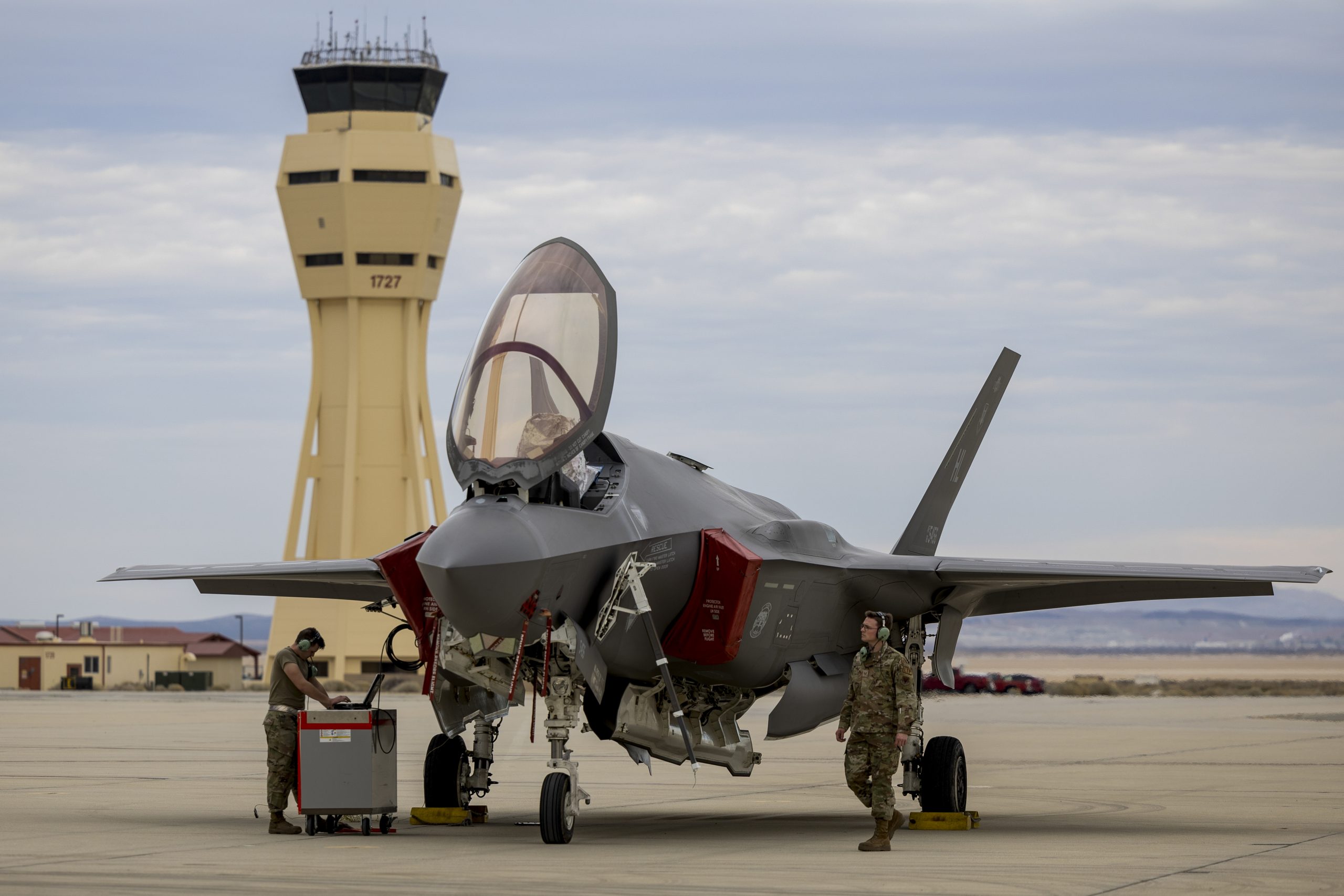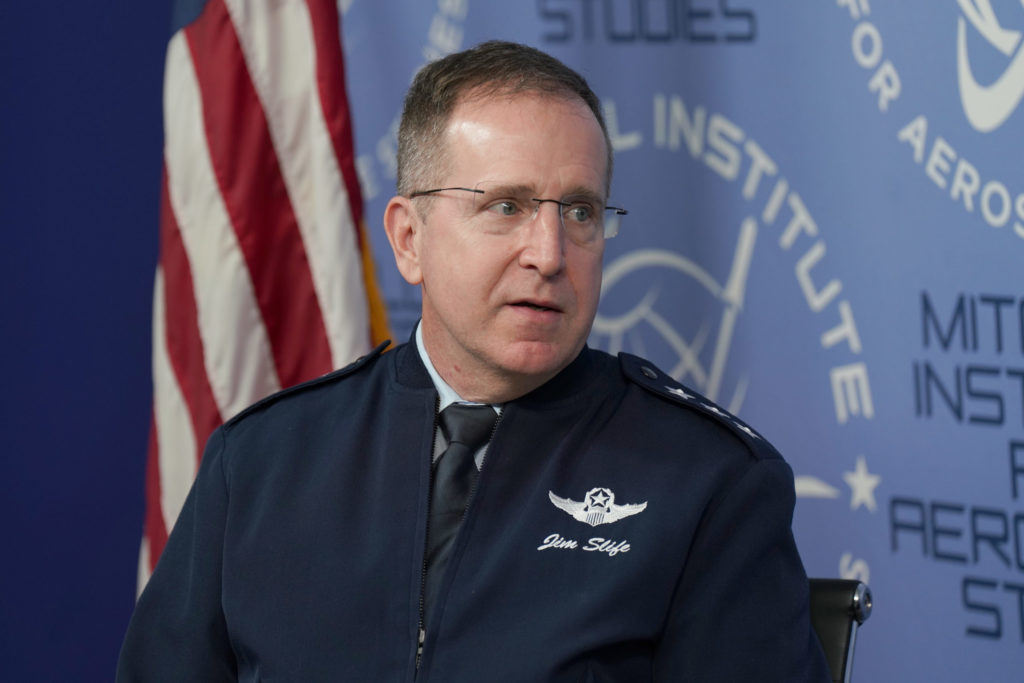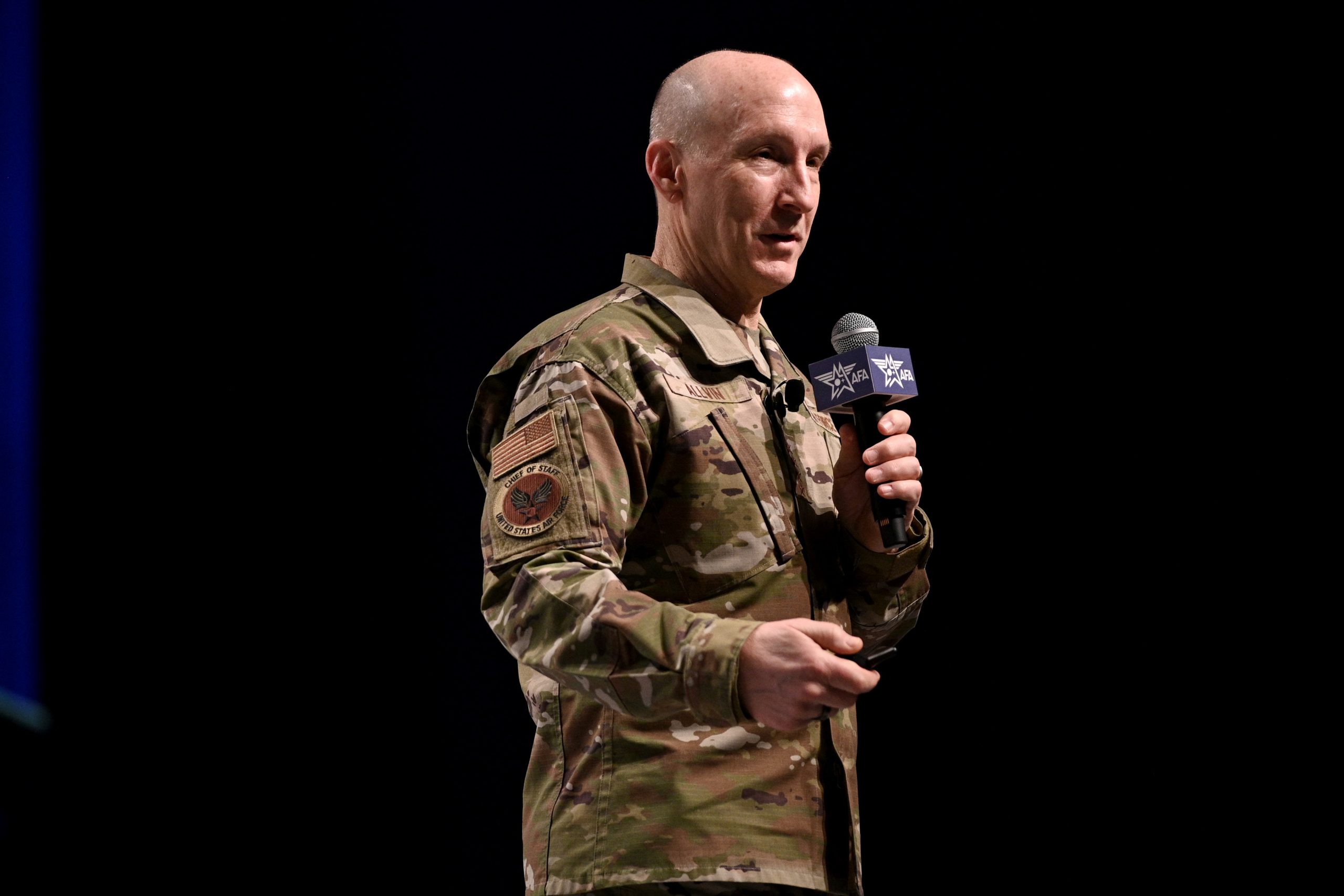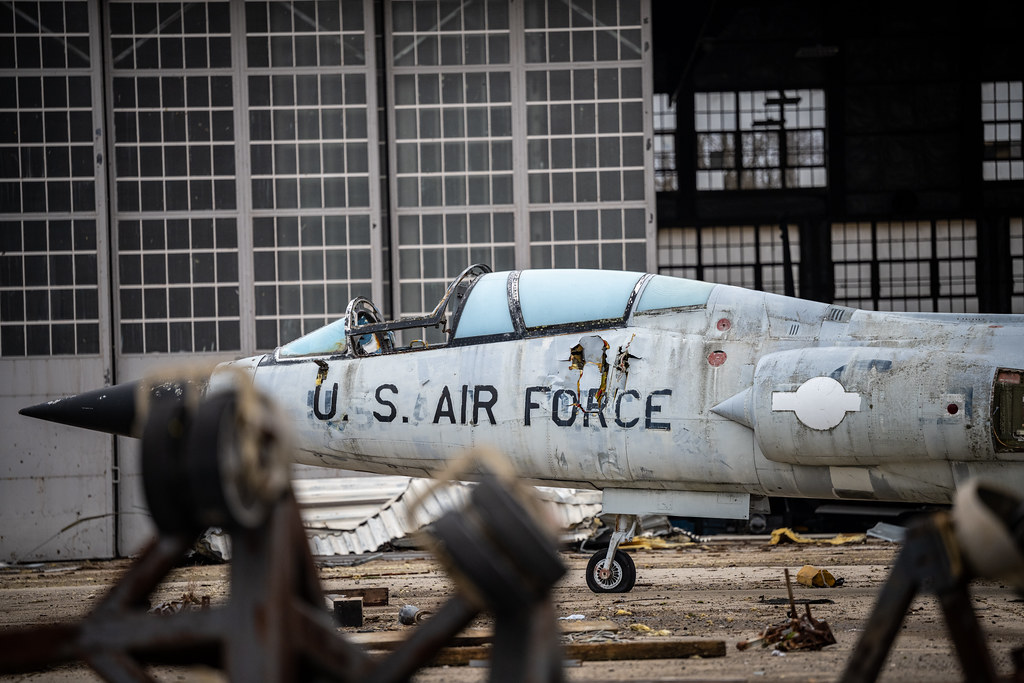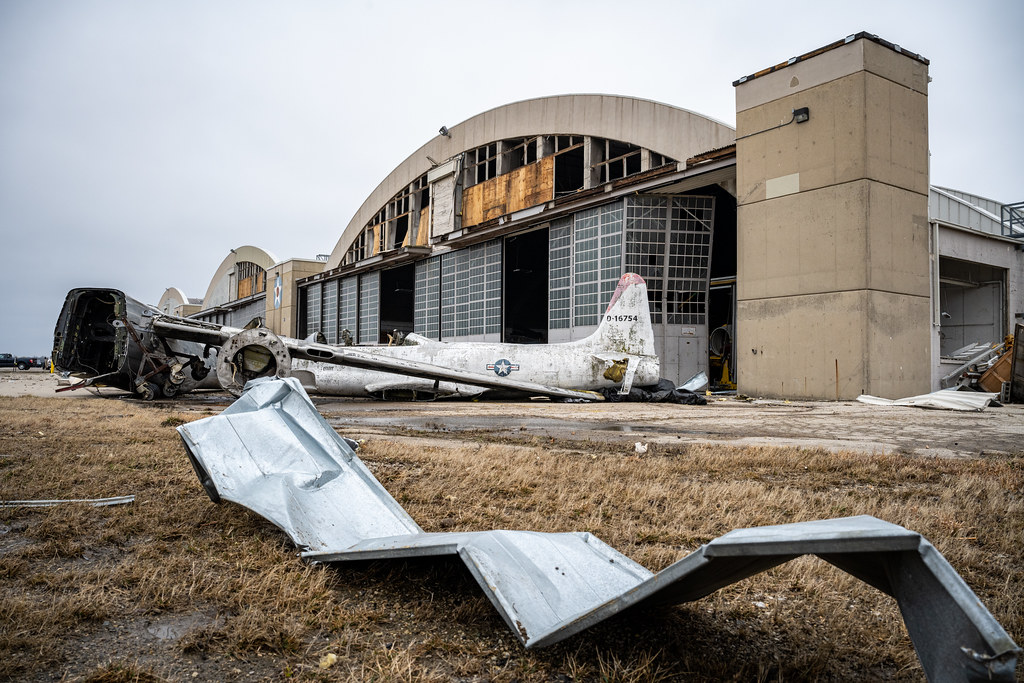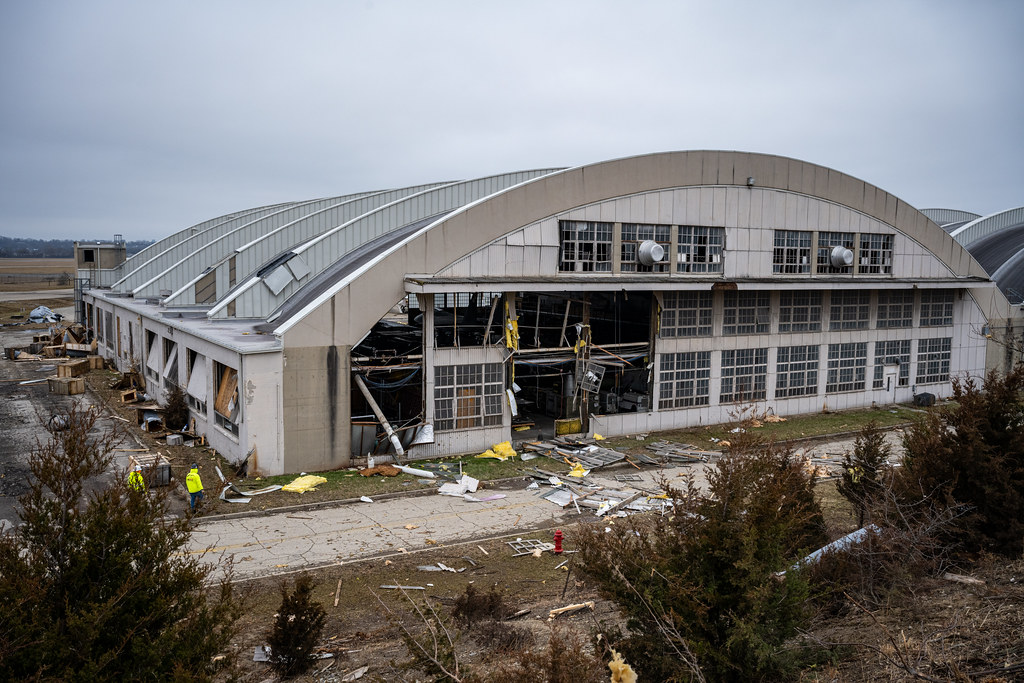Chief Master Sergeant of the Air Force JoAnne S. Bass and Chief Master Sergeant of the Space Force John F. Bentivegna shared the stage at the AFA Warfare Symposium on Feb. 13, 2024, to discuss issues affecting enlisted Airmen and Guardians such as pay, quality of life, and readiness. Watch the video or read the transcript below, made possible through the sponsorship of Schneider Electric.

CMSAF #14 Gerald Murray, USAF (Ret.):
Thank you. Well, good morning everyone. This bright and early morning here as we kick off the final day of most historic Warfare Symposium and just happy to see everyone here and especially a pleasure to be here with two fellow chiefs, the Chief Master Sergeant of the Air Force, JoAnne Bass, and the Chief Master Sergeant of the Space Force, John Bentivegna. So… Absolutely.
So we were also together just a few days ago as well, and of course for a little different and certainly more somber occasion, but also one of celebration as we were at Lackland Air Force Base for the funeral and internment of our fifth Chief Master Sergeant of the Air Force, Bob Gaylor. And I’ll tell you that we wish all of you could have been there. It was one of the most memorable memorials and celebrations of life that I think I have ever attended. And Chief Master Sergeant of the Air Force Bass delivered an incredibly eloquent eulogy of Chief Gaylor’s life, 93 years and over 73 years of service. And Chief Bass, if you would, please maybe share what Chief Gaylor meant to us.
CMSAF JoAnne Bass:
I would love to. First off, good morning AFA. You can tell this is day three. Hey, real quick. Thank you, Gerald. It really was an honor to be able to honor CMSAF 5 and his family. He actually served over 75 years, 31 in uniform, 44 years afterward. He was a defender by trade and then an MTI and then our CMSAF. He has timeless leadership lessons that many of you all know. Many of you have heard his stories like what?
Hot fries, name on the mailbox, attitude, aptitude and opportunities. And so what’s amazing about Chief Master Sergeant of the Air Force #5, Bob Gaylor, is his lessons are timeless and they will be forever remembered. If you’ve never heard of Bob Gaylor, I would ask you just Google him. You will see his Wednesdays with the chief. He is a man who served honorably and well and took on his nation’s calling. And so it was really an honor to be able to recognize our beloved Chief Master Sergeant of the Air Force 5. And it was really great to also have the on the Space Force there to honor him as well.
CMSSF John Bentivegna:
Yeah, I was an Airman for 26 years before I became a Guardian and the influence and impact he had on me and several of the other senior enlisted leaders across the Space Force who were Airmen prior to that. But as you said, it was very fitting. There was a lot of laughing, some crying, a lot of storytelling, but I think it was very appropriate. I think he’d been very, very happy for our chance to get together and honor his legacy and what he did. But as you said, it was an emotional couple of days, but it was phenomenal. It was a great tribute to a great man.
CMSAF #14 Gerald Murray, USAF (Ret.):
Well, as you know, Sherry couldn’t be there, but she watched it live and she sent me a text during that time and she said there’s no doubt that everyone that was there we’re served hot french fries as she cried and laughed her way through that. We will miss him. So thank you very much. Well, again, thank you all for being here. I think it is very fitting to be able to have both the chiefs here to be able to take and provide inputs and about their direction and priorities here. So Chiefs, of course on Monday, Secretary of the Air Force, Kendall, Undersecretary Jones and both General Allvin and General Saltzman, unveiled the plan for the reoptimize department of the Air Force for great power competition. Throughout this conference, many other people also spoke about the various aspects of the plan and purpose.
So Chief Bass, I’d like to begin with you on if you might share what your perspective is regarding the plan changes for the Air Force and how do you see it affecting our enlisted force?
CMSAF JoAnne Bass:
So first off, Gerald, good morning to everybody again. Thank you for your service and for having us here. Big thanks to the AFA team for always hosting such an amazing event. This is actually the largest war fighting AFA that I’ve ever been to, largely in part because of the announcements of great power competition. And so what I would say to what do I feel about it or what’s my take on it, it is about time. Many of our Airmen have heard me say, I think you’re going to see more change in the next four to six years. And I’ve seen in my entire almost 31 year career, it is about time. Our Airmen are ready. They’ve been ready, they’ve been postured for it. The big question that most of them have even today is ready for what? What does this mean to us? And so what I would tell you is we understand the why we have to reorient toward the threat that we have.
We understand the why. We just got shared some of the what, but some of that, what is still going to iterate based off of you all. The how we’re going to get there is still being worked out through all… The real work starts now and so each and every one of our Airmen will be crucial to helping us get after how we will do this and reorient the force toward these things. And what I would say to you too is don’t wait on us, right? There are things that all of us can do within our squadrons, within our flights, within our sections. All of us ought to be thinking about how can we reorient toward the threat in my section and make things better for us? But our Airmen are ready. It’s about time.
CMSAF #14 Gerald Murray, USAF (Ret.):
All right. Well, along that line, Chief Bentivegna, Secretary Kendall recently stated that the changes proposed by the department and the Air Force leadership and Department of Air Force leadership are more than just organizational structure. It also is how we train people, what kind of skillset sets that we want to have and what that mix of skillsets is. So with that in mind, with Space Force Guardian civilians making up nearly 50% of the Space Force and the enlisted in the officers being about 50%, 50/50, what unique skillsets or roles and responsibilities do you see the enlisted force taking on as you continue to focus on growing and developing the service?
CMSSF John Bentivegna:
So General Wright, thank you very much. Let me start with saying thank you for your service and for the years you’ve put into AFA and allowing us to have opportunities like this to come together, has some professional development, make some connections and talk about what a great department of the Air Force that we have. Thank you very much, sir. I wish you the best of luck in your future endeavors. So General Saltzman talked about… We just went through a review of the officer enlisted in civilian roles and responsibilities. With such a small service that we have and we kind of inherited a lot of the infrastructure, the organization from not only the Air Force, but the Army and the Navy, other entities that we had piecemeal that we brought together and realized we’re such a small focused service.
On the illicit side, we only have cyber operators, intelligence operators, and satellite operators. So how is it that we maximize those functional areas with the number of officers enlisted civilians? So we went through a drill and said, we’re such a small mission focused service, how do we appropriately apply those talents to get after that? And then that’s what we’ve done. So what does that mean? What is a training skillset? So in addition to how we employ them in that document, it talks about the de-enlisted force or the war fighters of the service. They’re the subject matter experts in their weapons system and they’re responsible for the training and the readiness of the unit of action or the combat squadron to combat detachment that we’re to present forward. So that opens up an opportunity for us to kind of embrace and own that mission set.
And General Saltzman talked about right now the initial focus is on how do we train in a different way the Officer Corps or the Space Force? But that’s the first endeavor. But we’re already looking at what does that mean for the civilian corps and their development model and for the enlisted? So some of the career field managers already have been looking at the work they’re doing on the officer course and identifying 20 or 30 different syllabus items that hey, we’re going to have to beef these up for the enlisted corp. We’re going to have to add these into curriculum as we continue to develop what that is. And those roles are responsibilities. As an example, how do we look at what the NCO of a Guardian does? So we have Tech Sergeant Joshua Kossler from Delta-9. He just certified as a mission director for the X-37B experimental space plane.
That’s an example of someone who’s a subject matter expert, who’s a war fighter for the Space Force and getting after the mission set. So I think this evolution, this journey that we’re on is going to empower the enlisted corps to really get after what they want to do, which is the mission and stay focused on that. So I’m really excited where this is going to go.
CMSAF #14 Gerald Murray, USAF (Ret.):
All right. Well, Chief Bass, since you’ve been in this seat, you’ve been focused on building what you call the force of the future. You’ve put a lot of things in place along that way with other things. So what do you hope that what you have put in place and what you envision now with these changes will look like maybe one, five, 10 years from now of how you see the force?
CMSAF JoAnne Bass:
When it comes to, I would offer the force today and the force of the future, you’ve heard it from the top four, from the secretary, the under, the CSO, the chief of staff of the Air Force on what our thoughts are on what that force of the future looks like. I would tell you the force of the future is reoptimize for great power competition. The force of the future is empowered. The force of the future are critical thinkers. The force of the future value what the total force brings and the one team brings to the fight. What I’ve seen as I’ve been walking around and talking with some of our Airmen throughout this AFA is I’ve been able to see the force in full effect. Even as I travel, I see the value of the total force. Do we have any Guard in here? We have one? Do we have any Guard? Where’s the Guard at?
CMSAF #14 Gerald Murray, USAF (Ret.):
Oh, there they are.
CMSAF JoAnne Bass:
What about our Reservists? Our future force will value what the art component brings to the fight. We’ll figure out ways to integrate by design everything that they do. I tell people all the time, our Guard and Reserve teammates are actually the secret sauce that we have. The skillsets they bring to us with their civilian expertise. And oh, by the way, most of your Guards, when you see your Guarding or your reservist, you really need to just give them a high five and a thanks because it’s not lost on us that most of you lose money to wear this uniform. You bring with us huge skillsets. For our Guard teammates, you have the state partnership programs. It will be a future force that values all of those things.
CMSAF #14 Gerald Murray, USAF (Ret.):
Chief, I don’t know if you want to maybe pick up on that because of course you are still building. You have Air Force Guardsmen doing space missions still, but that hasn’t been worked out yet as your Reserve. And General Saltzman spoke there on Monday about having full-time, part-time, being able to rotate. How do you see and what does your view of how that’s going to work?
CMSSF John Bentivegna:
So we’re really excited about, so there’s a Space Force Personnel Management Act, which came into law with the NDA that was signed by the president in December. So we’ll work through it. So throughout my career as an operator doing this mission set, partnering with the reserve units, for example, flying the GPS constellation, we have individuals from the activity side from two stops and we have their teammates 19 stops that are out there. And even when I was doing missile warning up at Buckley, that 7 SWS was up there partnered with me when I was in 2 SWS, a Space Warning Squadron. But the discussion was in a future service, how do we expand optionality for the service member and not be challenged with the changing of components? So it’s sometimes a challenge for someone to go from active duty into the Guard coming on orders, off orders, and how do you leverage that expertise that Chief Bass talked about.
So the Space Force Personnel Management Act is going to allow us to bring that what exists today as a reserve component, primarily the 310th space wing under the arc into the Space Force. Now, it’s not going to be just picking up and recreating the reserve in the Space Force. It’s not what we want to do, we have a completely different model. And it’s going to allow not only for members who are active duty Guardians today, but part-timers exist. But how do you flow seamlessly between? Life happens, opportunities come up and like Gerald said, you want to leverage that expertise, people who are dedicated to the space mission set. But how do we enable them to say I’m at a point in my life where I think I’d like to go part-time, to back to school or focus on something in industry, but then be able to seamlessly come back in active duty to be able to do that on full-time status?
So we’re working through that, but because we’re not going to just duplicate what exists today, we have to figure out the laws and the policy. How do you pay a part-timer? What does a part-timer mean? On the full-timers today that are in the arc, it’s kind of easier, right? There’s a model for that. The systems understand it. Compensation’s understandable. We’re really excited where this can go. They really take advantage of that. But for the long run, how do you retain the talent by offering flexibility without a lot of the bureaucracy in the red tape? We’re excited where it’s going to go.
CMSAF #14 Gerald Murray, USAF (Ret.):
And let me say though, and I agree with you. I agree to be excited about that because you’re going to have the opportunity to do some things and break paradigms not just for the Department of the Air Force, but I see it for the Department of Defense and the other services. And you’re going to be able to do it at a scale that to where the Space Force can be leading the way in how the Department of Defense might be able to take and make some changes that have long been needed.
CMSSF John Bentivegna:
So I’ll tell you, so Chief Bass and I have talked about this and the other senior enlisted advisors from across the services, this small 9,400 active duty force that we have for Guardians, we’re trying some things. We’re a little petri dish of hey, how do we change the paradigm of what it means to serve your nation in uniform? And we talk all the time, what can we share that can be upscaled to the other services? I was running some numbers this morning. For every active duty soldier or for every Guardian, there’s like 47 soldiers on active duty. Just the sheer size of capacity. General Saltzman told yesterday how many space forces could you fit in Fort Carson. But there’s advantages to be agile, to do that and then share what we’ve learned with our teammates and how can they upscale that.
CMSAF JoAnne Bass:
And we’re watching. It goes back into the previous question on the force of the future. I think it’s important to know as we’re thinking about how do we attract, how do we onboard how to retain this force today and the force of the future, it’s not going to look like it did when I came in. If we think we’re going to retain the force that we need with 1990s policies or 2000s policies, we’re probably wrong. And one thing that I might offer, I do a lot of studying on generation Z. Generation Z is the most misunderstood generation. People always say, “Oh, this generation doesn’t want to serve.” That’s not true. They actually want to serve, they just want to serve in their own way. And so we’re going to have to think deeply about how do we balance that flexibility that you’re talking about, CMSAF, with the fact that we’re serving in a profession of arms, a uniform service? And it’s a bit different so I’m excited for what that might look like.
CMSAF #14 Gerald Murray, USAF (Ret.):
Well, turning back to you for a second there, another thing that I think it highlights of what a difference with the Space Force is some in the Air Force as we’ve long known, but you’ve talked about the 24/7 employment that’s in place missions where many, if not all of your conversation with the public and the Airmen and Guardians, how do Guardians continue to develop if they’re locked into this 24/7 model and maintaining our nation and Department of Defense face power around the clock 24/7?
CMSSF John Bentivegna:
So that’s been a really big initiative that we’ve looked at. As an independent service, as a separate service, we have how do we present forces to the combatant commands? And that’s our Space Force SPAFORGEN model that we have. So because back when I was still an operator, back when I had hair back in the day when I was working on ops floor, I was considered myself. I was in the fight 24 hours a day, seven days a week. So you’re right, what was the time that the service at the time, Air Force Base Command, had to develop me, give me upgrade training and do the things I needed to do if I’m constantly… My readiness was burning away ’cause I didn’t have the chance to do that.
So on the spot four gen model that we’re doing, not only on the joint side for OSD do they understand how we’re presenting forces that are committed to the combatant command, but what the Prepare, Ready, Commit model of Spot 4 Gen, it allows us as a service for the OT&E side to have Guardians in that targeted window to say, this is when your upgrade training is, this is when you do exercises, this is when you go to PME to balance that model. Because as a employed in place force, primarily the preponderance are forces. All the services have some equity that’s employed in place all the time. But for us as such a small service, when you look at our combat capability, it’s almost everything. All of us are employed in place. Now, we do have Guardians that are in exterior locations that pack up in the back of a jet that Chief Bass provides for us to get someplace for us to get someplace, but that’s a small contingent, but for the most part they’re that employed in place model.
And we have to have the service shaped that allows them to do their job, but also we do our job as a service to do the training, the organization, and be able to provide ready forces to the combat commands. So the Spot 4 Gen model that we’re implementing allows us to get after that unique challenge we have as a service because we’re just primarily employed in place.
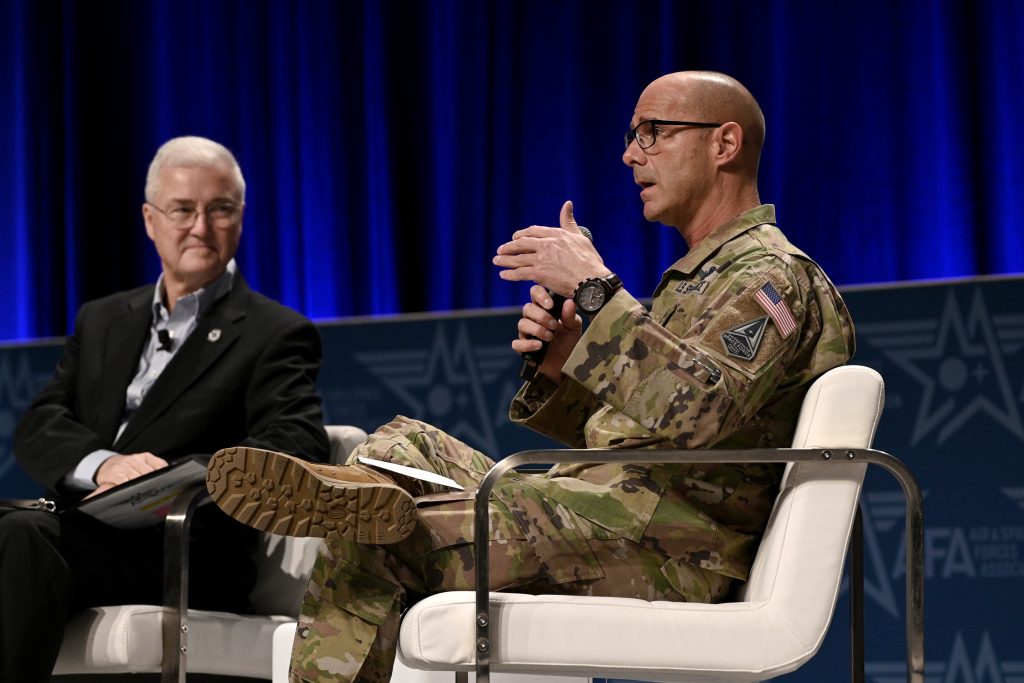
CMSAF #14 Gerald Murray, USAF (Ret.):
Right. Well, we mentioned speaking publicly, and both of you do in multiple ways, but I don’t know if everyone knows this, but two weeks ago both of you testified before the House Armed Services Committee on military personnel. Can you share with us a main point or the priorities that you expressed to the congressional leaders regarding the readiness of our forces? And how receptive did you find the congressional leaders to you and what you and your fellow SELs advocate for on behalf of our force. Chief Bass?
CMSAF JoAnne Bass:
So I will tell you that the quality of life panel, those congressional leaders were very receptive, right? They want to know what can they do to help our service members and their families first and foremost. I’ll tell you, we had a good time on that panel, by the way. So Chief Master Sergeant of Space Force sat right next to me and I told them, I said, “Hey dude, when I kick you, that means I need saving.”
CMSSF John Bentivegna:
You heard she kicked me. You heard her-
CMSAF JoAnne Bass:
So I didn’t like that we’re so far away now because I said I might need saving and I can’t kick you from here, but I’ll tell you.
CMSSF John Bentivegna:
Safety zone.
CMSAF JoAnne Bass:
So some of the key points were things by the way that we are always advocating for all the time, and all of your senior leaders are advocating for all the time. For me, for the past three and a half years it’s been paying compensation, it’s been healthcare, it’s been housing, it’s been childcare. Every single thing that matters to you, your family members, your fellow wingmen, our Guardians, those are the things that we really do advocate for. I would also offer that testimony is one thing, but the real work happens during the office calls, it happens during the phone calls, it happens during the trips on The Hill. So lots of work from all of our senior leaders to help get after some of those things. If I can just say one thing on the pay and compensation ’cause I do think we’ll make some movement there, but we haven’t had a targeted pay raise to our pay chart since 2007. We have the most educated, talented enlisted force in history. In history. It is about time for targeted pay raise.
CMSAF #14 Gerald Murray, USAF (Ret.):
Here, here. Here, here. Chief Bentivegna.
CMSSF John Bentivegna:
So when I got into the role in September, right away the team understood the criticality importance of getting me up on Capitol Hill and I started doing office calls immediately. And I’ll tell you, to Chief Bass’s point, every single office call off to the pleasantries about, hey, welcome, ended with what can we do for the men and women of the Space Force? How can we help? So there is a relationship, there’s opportunity there. And one of the things that I say, one of my greatest honors wearing these stripes in this position is getting to brag and on the behalf of Guardians and their families when we get a chance to do that. And the quality life panel, which I think Chief Bass correct me if I’m wrong, but that’s the first time we actually had a dedicated panel like that for us.
CMSAF JoAnne Bass:
That is the first time, and really driven by the department of the Air Force. Those panel members are like, “Hey, how can we help?”
CMSSF John Bentivegna:
So it gives a platform and I think all the SCAs are pretty much lockstep about paying compensation and that not only of the quality, the education, the digital literacy, but the talent that we’re recruiting today on the enlisted side across all the services far exceeds anything we’ve seen in history. But beyond that, what we’re asking these men and women to do far exceeds anything we’ve ever asked them to do before. So it’s really looking at the model, and being workings in some of the opportunities in some meetings and reviews in the building, looking at the pay and compensation model, when they do the analysis, the measuring stick that they’re using it seems like, well hey, we’re doing okay as a military service. But the stick we’re using to measure has to be evaluated I think based on where we are today.
As an example, one of the things that I talked about in my testimony was that we talked about BH. And when you look at what the anchor points are for housing and say what does it cost to rent a three bedroom townhouse in every area? You say, well we’re paying BH the 95%. Hey, it hits the mark for members. But here’s the challenge with that measuring stick. If you’re an enlisted person with a family 99% of you do not get compensated for a single family home. You don’t get compensated. The measuring stick we use for a three bedroom single family home, you don’t hit that anchor point until you’re an E-9. It’s just 1% of us. So is that model that we’re looking at maybe just a little outdated? What is the value proposition of service? It’s changed, and I think that’s the goodness of the dialogue we’ve had and our elected officials are very much interested in that conversation, but we have to talk about it.
CMSAF JoAnne Bass:
If I can add one thing to that point, I think there’s a balance. While your senior leaders are fighting the good fight for quality of life, and trust me we are, there’s a balance still. And that balance is at the end of the day, our service members are compensated well. We can’t forget the things that we have. While we still have room for growth, we can’t forget that we still have healthcare, we still have housing allowances, we have things like Air Force School, we have tuition assistant, all the things. Let me tell you what the PLA doesn’t care about. They don’t care about clothing allowance, Air Force School, BAH, they don’t care about those. So I think sometimes we can wonder, how can we get more? I would offer it’s a balance, right? We’ve got to figure out a different more modern model, I think because civilian organizations are offering great compensation packages where 10 years ago they weren’t. So we’ve got to assess that. But our military by and large is a calling and worthy and I think we do a good job on making sure that we take care of today’s service members.
CMSSF John Bentivegna:
And I would just add the one last point that we had the opportunity to highlight was for the quality of life, the investments we’re making in dormitories and CDCs. We’re making great strides, we’re trying to get policies out there, but we talked about the need for stability in our funding. We palm stuff out and there’s things we want to get after, but if you don’t have the money, you can’t execute what we plan for then we fall behind. And that’s where we get into some challenges where we have men and women maybe their quality of life isn’t where it needs to be. It’s not sometime for a lack of trying, it’s just that we couldn’t execute on time and on budget because of the challenges that we have. We tried to make that point when we had the opportunity on the Hill as well.
CMSAF #14 Gerald Murray, USAF (Ret.):
That’s good because as we know, and the secretary drove the point home hard on Monday about these continuing resolutions don’t allow the funds in multiple ways, including to our personnel. And again, thank y’all for being able to testify and how passionate you are because we know that quality of life and we know the effects on our families and everything is readiness and affects our readiness as well. So thank you. To the point about money, Benjamin Franklin once wrote, “The best return on your money, pour your purse into your head.” Chief, can you share some of the investment the Space Force is looking at for Guardians with training and education opportunities?
CMSSF John Bentivegna:
Yeah, I’d love to. Readiness, we have to make sure our Guardians are trained and ready. So one of the large initiatives actually in the ’24 budget, I think it’s over $300 million in OTTI, which is Operational Test and Training Infrastructure. Because the Guardians, they thirst for the opportunity to apply the skill craft that we’re teaching them in the tech schools, but how do they get a chance to actually fight the fight in an environment that prepares them for China or the high end fight conflict? How do we execute and practice? What does it mean competitive endurance? But from a force perspective, it’s not a checklist positional training environment we need. We need to be able to at the force service level, the forces we provide, whether it be GPS, satcom, spatial electronic warfare, orbital warfare. How do we integrate that in an environment where our Guardians can actually train and fight? That’s what they want and we’re working really hard to invest and give that to them because we got to get the training.
But we’re making strides. I think in December we had the first red skies, which was an orbital warfare exercise that we had went very successful. That was the first one. We’ve had several black skies exercises, which are electronic warfare, and we have blue skies I think we’re going to try and do which will be cyber, but we have to be able to have the infrastructure to allow them to do that. In regard to being innovative, if they don’t have the infrastructure we’re helping to train, even if it’s a whiteboard and some pieces of paper we’re getting after it, but we have to make the investment because we have to train them accordingly to be able to succeed in the high end fight. So we’re going after that. On the education front, right now we have our own NCO Academy and senior NCO academy on Peterson Space Force Base. The team Chief Bratton, the commandant last couple of months had a stand down in reimagining what does EPME look like for an enlisted Guardian?
And I’m really excited to get the outbrief and see what that curriculum changes are coming up in the next couple of months. But we’re also leveraging all the opportunities that we can. We have education with industry, we get slots to do that. We have a Guardian right now down in Norfolk in JPME-II. So we’re leveraging traditional things that the other services have to offer, just maybe not as much of a grander scale because we’re so small. But we’re having the discussion based on what’s needed from a training perspective to be the war fighter, but then how do we educate the Guardians as well? Especially in light of the officer enlisted and civilian roles and responsibility paper. All these things are feeding into the development model, what does that career path look like? Whether it be eight years, 10 years or 20 years, what is that journey for a Guardian? And all these initiatives are coming together, the synergy of all will define those investments that we’re making.
But I’m really excited where we’re going because we… Like General Allvin talked about yesterday, don’t look at it as we have to reoptimize. We have the opportunity and we’re going to embrace it. Having the Guardians on the team today, especially when you talk about not only the Guardians who are Airmen that were Airmen prior, but soldiers, sailors, marines, and then what I like to call OG, the original Guardians came in out of society, right? Were never in another uniform and leveraging, hey, when you decided to become a Guardian, what was in your head? Help us define what that looks like. What is your development model that you want us to provide to you? And we’re bringing all that together to really shape what that education and training looks like. But the first thing is war fighting, OTTI. Fund it. Got to get executed.
CMSAF #14 Gerald Murray, USAF (Ret.):
All right, we’re closing in and of course I’ve saved a little bit at the end, but there was an audience question that was asked of General Allvin on Monday and after General Allvin announced the changes to the force. And one of those was affecting the force in personnel by bringing warrant officers in. A tech sergeant asks you sir, when you may open up to other career fields. This question has been around for a long time in Air Force, and I made an off the cuff statement during the time I was of the Air Force “Over my dead body.” But then I went on to highlight and be able to describe the fact that perhaps in time, and if we did, that where we may start in the career field was exactly what General Allvin said. It was in our IT and our cyber area, which has grown exponentially technical and the demand of those.
And so chief, if you would, to answer the tech sergeants in your perspective of that. And then on top of that, General Saltzman said that right now that that’s not a consideration for looking into Space Force. So both of you given maybe a quick opportunity with that question.
CMSAF JoAnne Bass:
I say what my boss says. So it gets back to how do we maintain our competitive advantage? For all the right reasons. I’ve never said that by the way, Gerald Murray, but I would offer when I first got in the seat and people would ask me, what do I think about warrant officers and do I think that we need them? The answer was originally no. And what I said is I don’t know that that’s the model we need, but I do know that we need a model to be able to retain our technical experience. That’s a fact. I know by the way, there’s been studies on should the Air Force have warrant officers or not? I don’t get excited about any studies because a study, you can get any study to say anything that you want it to say, right?
What I would offer is it gets back to today’s Airmen and Guardians want different pathways to serve, and we are in a organization that we’ve got to keep some of our technical expertise, deep technical expertise, and that’s all we need them to focus on. Not necessarily the leadership path, if you will, that some and so we’ll have to balance out what that looks like. And so I’m excited for where we’re going. I think it’s the right move, and I think there’s more to come in terms of it gets back to how do we retain the force that we’re going to need? It’s not going to be by policies from the nineties or the two thousands, we really do have to reimagine what that looks like.
CMSAF #14 Gerald Murray, USAF (Ret.):
Great.
CMSSF John Bentivegna:
So when we started, even before the warrant officer discussion for just GPC initiative, but as the Space Force established, and we only started with three functional areas for the enlisted corp within the Space Force, we already envisioned a very technical focused steeped in the mission set that we train them in career path to start with. So when we looked at the warrant office at discussion as we’re looking to define how we want to employ our enlisted Guardians, and a lot of times I just want to do my job. I got trained to do something. I love doing the war fighting. Well, our model inherently already provides that. Like I said, when you read the officer enlisted civilian roles and responsibilities, technical expert responsible for readiness, the war fighters of the service. So that pathway kind of exists to be able to do that. The other thing too as such a small service that we have is I still want to try and provide Guardians with options.
Like Chief Bass said, they want options in how they serve, but because we’re so small how do I grow my replacement? So I might reach out to a Guardian. I’m a cyber operator and I love what I’m doing. I just want to do this. Hey, continue to do that, and by the way, maybe you can replace me someday. Maybe you can replace Karmann Pogue’s STARCOM someday. So I don’t want to limit their options, but I also want to be able to allow them to stay focused on the war fighting, on the skillset they have. Compensate them where we can. Reward talent, not necessarily buy in strength, but also allow them to follow the path where I don’t want to put limitations. We’re just too small. And then you talk about the numbers. You look at the Navy, I think it’s like 0.6% of warrant officers and the Marine Corps’ about one, Army’s a little bit more, but in our size those numbers are just so, so small. To have a third category of Guardian just from the logistics perspective isn’t feasible for us.
CMSAF #14 Gerald Murray, USAF (Ret.):
That’s great. Chief Bass, you’re getting ready to turn the seat over the Chief Master Sergeant of the Air Force Number 20. If you would share, what accomplishments are you most proud of during your time and your tenure as our 19th Chief Master Sergeant of the Air Force.
CMSAF JoAnne Bass:
In three weeks Number 14, in three weeks. When it comes to the accomplishments that I’m probably most proud of, I would say it’s the accomplishments that our Airmen make every single day. I always tell my team, man, I wish I had a GoPro on because I want our senior leaders to see the excellence and the greatness and the innovations that I get to see every time I come to one of your installations. And I want our other Airmen to see the greatness that’s happening across the board. I would also say the other accomplishment is really over the past few years, and I think most of our senior leaders would agree, we have helped raise the strategic IQ of the force. It wasn’t lost on me that over three and a half, four years ago, most of our Airmen were probably more concerned about beards than they are about China. That by and large has changed. And so I’m really proud of that, but that’s because of the good work that our teams have been doing.
We rolled out things like an Enlisted Force Development Action Plan, how do we have the Airmen that we’re going to need in 2030? It’s just not going to happen by a happenstance. We rolled out an updated Brown Book, an updated Blue Book. We rolled out a Purple Book because we will never fight alone and we have to understand what we bring to the joint fight. We rolled out a blueprint. If you’ve never seen a blueprint, it’s something I wish I had as a young Airman and as a young NCO and certainly a great product for our officers and civilian teammates to see. We rolled out a lot of foundational documents to help again, raise the strategic IQ of the force to understand this threat that we have. And so those are some of the things that I will probably be most proud of, as well as getting after meaningful talent management initiatives and creating frameworks for that. Lots of work to do, but we’ve done a lot over the last three and a half years.
CMSAF #14 Gerald Murray, USAF (Ret.):
Yes, you have. Well, chiefs on behalf of the Air & Space Forces Association, thank you both for sharing your insights and some of your priorities here today. Without question, our Guardians and our Airmen are well led, cared for and represented by you. And Chief Bass, our 9th Chief Master Sergeant of the Air Force and all of us used to be asked a question, “When will there be a woman Chief Master Sergeant of the Air Force?” And chief, in his great wit that he had, would do a pregnant pause and he’d say, “I hope never. But someday there’s going to be the best chief in the Air Force selected to be the Chief Master Sergeant of the Air Force and she will lead the Air Force and our enlisted force in the greatest way.” Chief Bass, you have. Ladies and gentlemen, our 19th Chief Master Sergeant of the Air Force, historic as the first female, not only Chief Master Sergeant of the Air Force, but senior enlisted leader of all the services who has led us in such a great way. Please, ladies and gentlemen, a round of applause for Chief Bass. Thank you. Well done.
CMSAF JoAnne Bass:
I didn’t even get to say bye.
Lt. Gen. Bruce “Orville” Wright, USAF (Ret.):
Jo. On behalf of our Air & Space Forces Association, we couldn’t pass up the opportunity to thank you for your leadership and your inspiration and gosh, your heart. What some of us don’t know is that Chief Master Sergeant of the Air Force, Jo Bass, started out running an operations desk in a fighter squadron. And she’s never lost the heart of a warrior, and that heart that’s out there inspires all of us around the world. So thanks for letting me just stand up here for a minute. On behalf of the Air & Space Forces Association, thank you. And oh, by the way, our governance in our Air & Space Forces Association says there’s a spot on our board, our AFA board of directors, for the outgoing retiring Chief Master Sergeant of the Air Force. So please know there’s lots of runway in front of you. And just thank you for everything you’ve done, Chief.
CMSAF JoAnne Bass:
Hey, thanks again to AFA. Orville, thanks so much. It’s an honor to serve with you. I always appreciated your emails to me ’cause you always said “On your wing,” and so I appreciate that. When you’ve been doing this over 31 years, you’re an Airman for life. Even if you’ve done it for four years, you’re an Airman for life so it’s an honor to serve with y’all. And y’all aren’t going to make me cry this AFA. All right, y’all take care. Thank you.
